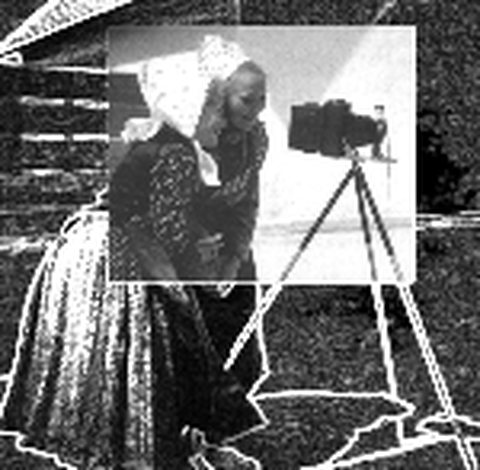Exhibition: Rudolf Hartmann - The eye of the folklorist
"Rudolf Hartmann - The eye of the folklorist"
A photo exhibition
October 12 - November 22, 2001
World Trade Center Dresden | Foyer
Project manager:
Collaborators:
Frank Almai
Ulrich Fröschle
Florian Frisch
Financing:
Saxon State Ministry of the Interior
with the kind support of w.e.b./Thelem Verlag
Project description:
The exhibition, which was first presented by Márta Fata at the Ethnographic Museum in Budapest in February 1999 and has since been made available by the Institute of History and Regional Studies of the Danube Swabians (Tübingen) for projects at other institutions, impressively depicts the specific culture of the Hungarian Germans, which is no longer preserved in this form, in a total of 133 photographs by the folklorist Rudolf Hartmann (*1902).
Hartmann, who was born in Leipzig and went to school in Dresden, also builds a bridge between Saxony and Hungary in his own person, which lends the immediate impression of his pictures an additional regional dimension, as it were.
In this sense, the Central European Center for Political, Economic and Cultural Studies at TU Dresden (MeZ) is now combining two specific objectives with the exhibition:
Firstly, the exhibition and the accompanying program are intended to focus the MeZ in a targeted manner on the mixed cultural space in today's Hungary in its overlaps with Romania, Croatia, Yugoslavia and Slovakia, thus preparing another field for intensive study.
On the other hand, the exhibition is intended not only to include the Pannonian cultural area as a "space of memory" within the framework of a further conceived series of such projects of the 'Mitteleuropa Zentrum' ("Wortreiche Landschaft" 1998/99 in Dresden, "Martin Opitz" 1999/2000 in Dresden, "Milichsche Sammlung" 2000/01 in Görlitz, "Tripolis Praga - Die Prager Moderne um 1900" 2001 in Dresden and other locations in the Czech Republic and Germany), but also to present the little-known everyday Hungarian-German culture, which has almost disappeared in this form, to the students of the TU Dresden in particular, and then above all to the interested Dresden population, while at the same time reflecting on the respective historical conditionality of such traditions in the lectures of the accompanying program.
In order to meet the scientific requirements and broadly effective educational mission, the exhibition will be accompanied by a series of lectures on cultural studies, which will not only place the exhibition itself and its exhibits in a historical context, but also analyze and present Hungary as a specific Central European cultural area from various perspectives in a combination of different disciplines. The accompanying program covers the following topics:
Lecture series
»Deutsche in Ungarn - Ungarn und Deutsche«
im Hörsaalzentrum der TU Dresden
Begleitend zur Ausstellung »Rudolf Hartmann - Das Auge des Volkskundlers«
Montag, 15. Oktober 2001, 19.00 Uhr:
Dr. Gerhard Seewan (Südostinstitut München): Zur Identität der Ungarndeutschen. Die Geschichte des deutsch-ungarischen Zusammenlebens
Montag, 22. Oktober 2001, 19.00 Uhr:
Dr. Holger Fischer (Universität Hamburg): Zur Geschichte der Ungarndeutschen aus (siedlungs-)geographischer Sicht
Montag, 29. Oktober 2001, 19.00 Uhr:
Dr. Mathias Beer (Institut für donauschwäbische Geschichte und Landeskunde, Tübingen): »die helfte hir und tie helfte zuhause« - Die Vertreibung der Deutschen aus Ungarn und ihre Eingliederung im geteilten Deutschland
Montag, 5. November 2001, 19.00 Uhr:
Prof. Dr. Csaba Földes (Universität Veszprém): Sprachinselforschung oder interkulturelle Linguistik? Überlegungen am Beispiel der Ungarn-deutschen
Montag, 12. November 2001, 19.00 Uhr:
Dr. Norbert Spannenberger (GWZO Leipzig): Das Zusammenleben der Deutschen und Ungarn im Spiegel des ungarischen Minderheitengesetzes heute
Montag, 19. November 2001, 19.00 Uhr:
Dr. Martá Fata: Volkskundliche Forschungen über die Ungarndeutschen vor dem politisch-ideologischen Hintergrund 1918-1945
Montag, 26. November 2001, 19.00 Uhr:
Dr. András Balogh (Universität Budapest): Ungarn und Deutsche in der Literatur
Sowohl die Ausstellung als auch das Begleitprogramm sind als öffentlichkeitswirksame kulturelle Breitenarbeit definiert, zielen also nicht auf ein Expertenpublikum, sondern vorrangig auf die interessierte Öffentlichkeit.

